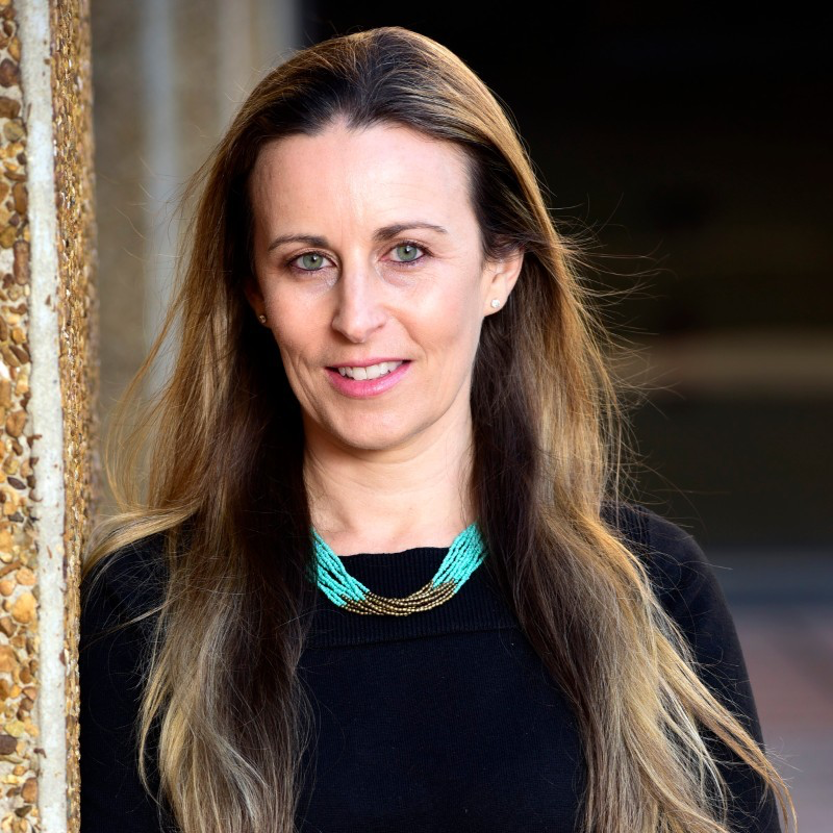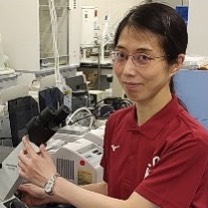Dr. William Slikker, Jr. was the former director of FDA’s National Center for Toxicological Research (NCTR). He received his Ph.D. in pharmacology and toxicology from the University of California at Davis. Dr. Slikker holds adjunct professorships in the Department of Pediatrics, as well as the Department of Pharmacology and Toxicology at the University of Arkansas for Medical Sciences. He has held committee chairmanships or elected offices in several scientific societies; including the Teratology Society (serving as president) read more...
bioinformatic session

William Slikker Jr., Ph.D.
Former director of National Center for Toxicological Research (NCTR)
U.S. Food and Drug Administration (FDA)

Weida Tong, Ph.D.
Director, Division of Bioinformatics and Biostatistics
National Center for Toxicological Research (NCTR)
U.S. Food and Drug Administration (FDA)
Arkansas, USA

Benjamin ER, MSc.
Acting Specialist Team Lead (Statistics & Modelling)
Research & Exposure Science Department (RESD)
National Center for Food Science (NCFS)
Singapore Food Agency (SFA)

Peter Newham, Ph.D.
Vice-President, Safety Sciences,
Clinical Pharmacology and Safety Sciences,
R&D, AstraZeneca
Cambridge, UK

Timothy W Gant
Head of the Toxicology Department
UK Health Security Agency
Harwell Science Campus
Oxfordshire, UK.

Maurice Whelan, Ph.D.
Deputy Director, Health, Consumers and Reference Materials
Head of Unit, Chemical Safety and Alternative Methods
European Commission, Joint Research Centre (JRC)
Ispra, Italy

Prof. Susanna-Assunta Sansone, PhD.
Professor of Data Readiness, Engineering Science;
Associate Director, Oxford e-Research Centre;
Academic Lead for Research Practice;
University of Oxford, Oxford, UK

Kwok Yan Lam, Ph.D.
Associate Vice President (Strategy and Partnerships), President’s Office
Professor, School of Computer Science and Engineering
National Technological University (NTU)
Singapore

Alexander Horst
Digital Transformator @
Swissmedic 4.0
Swissmedic (Swiss agency for therapeutic products)
Bern, Switzerland

Nicolas Perez Gonzalez, Ph.D.
Data Scientist
Swissmedic 4.0
Swissmedic (Swiss agency for therapeutic products)
Bern, Switzerland
William Slikker Jr., Ph.D.
Former director of National Center for Toxicological Research (NCTR)
U.S. Food and Drug Administration (FDA)

Multiomic reference materials and datasets for improved reproducibility
Multiomic profiling is an unprecedentedly powerful tool to characterize the same samples with complementary features orchestrating the genome, epigenome, transcriptome, proteome, and metabolome. It promises to demonstrate advantages over any single-omics type in identifying clinically important sample subtypes of inherently subtle differences, as well as in interconnecting intricate molecular features of perturbed diseases or actionable treatment targets. However, there is a lack of multiomic reference materials with ground truth to demonstrate wet-lab proficiency and data reliability of multiomic profiling. To this en read more...
Weida Tong, Ph.D.
Director, Division of Bioinformatics and Biostatistics
National Center for Toxicological Research (NCTR)
U.S. Food and Drug Administration (FDA)
Arkansas, USA

Dr. Weida Tong is Director of Division of Bioinformatics and Biostatistics at FDA’s National Center for Toxicological Research (NCTR/FDA). He has served science advisory board for several multi-institutional projects in Europe and USA. He also holds adjunct appointment at several universities. In addition, he is the founder and board chairperson of newly established international MAQC Society. His division at FDA is to develop bioinformatic methodologies and standards to support FDA research and regulation and to advance regul read more...
AI4TOX – an FDA Artificial Intelligence (AI) program for toxicology
AI4TOX is a program that aims to apply the most advanced AI methods to develop new tools to support FDA regulatory science and strengthen the safety review of FDA-regulated products. The program consists of 4 initiatives: • AnimalGAN: To predict animal toxicology data for untested chemicals through learning models that leverage existing animal data in support of the 3Rs approach (replace, reduce, and/or refine animal studies) in the safety evaluation of FDA-regulated products. • SafetAI: To develop novel deep learning methods for toxicological endpoints that are critical to the safety review of drug candidates before read more...
George Kass, Ph.D.
Chief Scientist Office
European Food Safety Authority (EFSA)
Parma, Italy

George Kass was trained as a biochemist. He received his PhD in biochemical toxicology from the Karolinska Institute in Stockholm in 1990. After a post-doc at the Swiss Federal Institute of Technology in Zurich he returned to the Karolinska Institute as Assistant Professor. In 1994 he moved to the University of Surrey in the UK where he became Professor of Toxicology. He moved to the European Food read more...
Data science for food safety: how to integrate new streams of data in the risk assessment process?
Over the past decade, digital technologies and data have transformed the economy and society, affecting all sectors of activity and our daily lives. Not surprisingly, data have been at the heart of EFSA’s strategy and activities because of the urgent need to evolve in the way data are collected and reported, and how data models and IT infrastructure are used in the sharing of data between data providers and EFSA. In addition, regulators, including EFSA, are preparing themselves for new data streams from the new approach methodologies (NAMs) and from animal-derived OMICs data through ongoing 3R efforts aimed at changing the way chemic read more...
Benjamin ER, MSc.
Acting Specialist Team Lead (Statistics & Modelling)
Research & Exposure Science Department (RESD)
National Center for Food Science (NCFS)
Singapore Food Agency (SFA)
Mr Benjamin Er is the Acting Specialist Team Lead of the Statistics & Modelling team at SFA. He oversees data science projects undertaken by the team to provide insights on emerging risks to food safety in Singapore. These include looking at the risk factors contributing to gastroenteritis outbreaks locally, analysing trends in global food recall notifications and using text analytics to make sense of consumer feedback and web data for food safety monitoring. Prior to joining SFA, Benjamin worked as a Statistician at the Singa read more...
Text Analytics for Food Safety Monitoring
A vast amount of data is collected by SFA daily for the monitoring and assessment of food safety risk from events occurring locally and globally. Many of such data are in free-text format which makes it difficult to quickly make sense of in a systematic way. In this session, we will look at two use cases of textual data that is collected, namely news articles on disease outbreaks scraped from the Internet, and public feedback on food poisoning received via feedback channels, and how text analytics techniques are used to analyse them. We will introduce the techniques used to process and classify these data into sensible read more...
Peter Newham, Ph.D.
Vice-President, Safety Sciences,
Clinical Pharmacology and Safety Sciences,
R&D, AstraZeneca
Cambridge, UK

Dr. Peter Newham is the Vice-President of Safety Sciences in Clinical Pharmacology and Safety Sciences, R&D, AstraZeneca. In this role, he is accountable for the non-clinical safety dimension of the entire AstraZeneca R&D portfolio. The Safety Sciences organisation comprises departments in Cambridge UK, Gothenburg Sweden, Gaithersburg US and Waltham US delivering discovery phase “drug –hunting” safety, safety innovation, investigative toxicology, non-clinical regulatory safety, genetic toxicology, reproductive read more...
Use of Machine-Learning and Artificial Intelligence for Drug Toxicology
The field of preclinical toxicology has traditionally been considered an essentially descriptive discipline where drug-related effects on biological systems were recorded with limited insight into the molecular mechanisms that drive the observed effects. More recently, the use of deep phenotyping of drug biological effects is permitting the selection of alternative safer compounds, understanding of pre-clinical species relevance and its translatability to human, prediction of safety events, ways to mitigate unavoidable side effects in the clinic, or development of safety biomarkers. Investigative (or mechanistic) toxicology has been gradually gaining momentum a read more...
Ruth Roberts, PhD, ATS, FBTS, ERT, FRSB, FRCPath.
Director and Cofounder, ApconiX, Alderley Park UK
Chair and Director of Drug Discovery, University of Birmingham, UK

Dr Ruth Roberts is Chair and Director of Drug Discovery at Birmingham University, UK and is Cofounder of ApconiX, an integrated toxicology and ion channel company. Before that Ruth was Global Head of Regulatory Safety at AstraZeneca (2004-2014) and Director of Toxicology for Aventis in Paris, France (2002-2004). Ruth is current Chair of the HESI board of Trustees, has served on SOT council and is past president of EUROTOX, the British Toxicology Society (BTS) and of the Academy of Toxicological Sciences (ATS). Ruth was the r read more...
Data Science in Early Derisking of Drug Targets and Discovery Chemistry
Early derisking of drug targets and chemistry is essential to provide drug projects with the best chance of success. Target safety assessments (TSAs) use target biology, gene and protein expression data, genetic information from humans and animals and competitor compound intelligence to understand the potential safety risks associated with modulating a drug target (1). However, there is a vast amount of information, updated on a daily basis that must be considered for each TSA. We have developed a data science-based approach that allows acquisition of relevant evidence for an optimal TSA. This is built on expert-led read more...
Timothy W Gant
Head of the Toxicology Department
UK Health Security Agency
Harwell Science Campus
Oxfordshire, UK.

Professor Tim Gant is Head of the Department of Toxicology at UKHSA and Visiting Professor at Imperial College London School of Public Health. He trained in Toxicology and Pharmacology at the School of Pharmacy, University College London (undergraduate and postgraduate). He is a European Registered Toxicologist, Fellow of the British Society of Toxicology and Member of the American Society of Toxicology. Post PhD he undertook postdoctoral periods with the National Cancer Institute, Bethesda USA (1988 to 1993) and Medical Resea read more...
Taking omics from concept to application in chemicals regulation
Genomics in various guises has been part of the research toolkit since the late 1990s. The first ‘omics methods consisted of nylon-based dot blots that made use of available cDNA clones. These clones were laboriously collected and sequenced using dideoxy sequencing (Sanger) with gel resolution that could sequence about 400bp in a day or two; when working well. The advent of 96 well capillary sequencing led to an increase in capacity and much larger clone collections that were held in bacterial libraries. Making use of this resource for parallel hybridizations required a new format. Enter the glass microarray the bedroc read more...
Maurice Whelan, Ph.D.
Deputy Director, Health, Consumers and Reference Materials
Head of Unit, Chemical Safety and Alternative Methods
European Commission, Joint Research Centre (JRC)
Ispra, Italy

Prof. Maurice Whelan is Deputy Director of the Directorate for Health, Consumers and Reference Materials of the European Commission's Joint Research Centre (JRC) and head of its Chemical Safety and Alternative Methods Unit, based in Ispra, Italy. He also heads the JRC's EU Reference Laboratory for alternatives to animal testing (EURL ECVAM). Maurice is the EU co-chair of the OECD Advisory Group on Molecular Screening and Toxicogenomics that is responsible for the OECD programme on Adverse Outcome Pathways; a member of the Stee read more...
Bridging scientific data with evidence needs for regulatory safety assessment
Although regulatory frameworks for food, drug and chemicals vary across the world, they share a common aim of protecting human health and the environment while supporting innovation, competitiveness and trade. To stay relevant and effective however, regulatory processes need to adapt and evolve to respond to several drivers, including emerging risks, changing socio-political priorities, and advances in scientific knowledge and methods. The latter represents significant opportunity for safety assessment practice, particularly in relation to phasing in mechanistic based approaches in toxicology and the state-of-the-art c read more...
Prof. Susanna-Assunta Sansone, PhD.
Professor of Data Readiness, Engineering Science;
Associate Director, Oxford e-Research Centre;
Academic Lead for Research Practice;
University of Oxford, Oxford, UK

Prof. Susanna-Assunta Sansone is a Full Professor in Data Readiness at the University of Oxford, an Associate Director and Principal Investigator at the Oxford e-Research Centre, and the newly appointed University-wide Academic Lead for Research Practice. She is also a Consultant for Springer Nature, and Founding Honorary Academic Editor of the Scientific Data journal. An author of the FAI read more...
Open, FAIR and reproducible science
Data science enables us to make sense of the massive amounts of data being produced each and every day, impacting on all disciplines and offering an unparalleled economic potential. The reuse of other people’s data is providing useful insights for new research questions and products, and driving new scientific discoveries. Realizing its potential will allow for unprecedented advances in scientific discovery and application. However, the growing scale and diversity of the scholarly digital asset (including datasets, algorithms, software and scholarly articles) is placing strain on the mechanisms we currently have for peer review and quality control of the read more...
Yuanting Zheng, Ph.D.
Associate Professor
School of Life Sciences
Fudan University
Shanghai, China

Dr. Yuanting Zheng is an associate professor at the School of Life Sciences of Fudan University. She is the executive secretary of the China chapter of the international Massive Analysis and Quality Control (MAQC) Society. Her research focuses on reference materials for multiomics quality control, aiming to translate multiomics technologies into clinical companion diagnosis. Dr. Zheng has been spearheading the Chinese Quartet Project (chinese-quartet.org) for quality control and data integration of multiomics profiling since 2 read more...
Multiomic reference materials and datasets for improved reproducibility
Multiomic profiling is an unprecedentedly powerful tool to characterize the same samples with complementary features orchestrating the genome, epigenome, transcriptome, proteome, and metabolome. It promises to demonstrate advantages over any single-omics type in identifying clinically important sample subtypes of inherently subtle differences, as well as in interconnecting intricate molecular features of perturbed diseases or actionable treatment targets. However, there is a lack of multiomic reference materials with ground truth to demonstrate wet-lab proficiency and data reliability of multiomic profiling. To this en read more...
Leming Shi, Ph.D.
Professor
School of Life Sciences, Human Phenome Institute, and Shanghai Cancer Center
Fudan University
Shanghai, China

PDr. Leming Shi is a professor at the School of Life Sciences, Human Phenome Institute, and Shanghai Cancer Center of Fudan University. Dr. Shi’s research aims to improve the success rate of drug discovery and development and to promote precision medicine by generating and integrating high-quality multiomic data. During his tenure at the US FDA, Dr. Shi conceived and led the MicroArray and Sequencing Qual read more...
Two Decades’ Effort on Developing Best Practice in Genomics and Its Contribution to Regulatory Science
The field of drug discovery and development has been facing two major challenges. First, the success rate of clinical trials of drug candidates is as low as 10%, which means that although there are many candidates in clinical trials, only few of them can eventually be approved by regulatory agencies for marketing. Secondly, the clinical efficacy of drugs is as low as 50%, which means that for drugs approved for marketing, many patients cannot benefit from using them. In short, good drug candidates, those that can eventually be approved for marketing, fail to stand out in all stages of new drug research and development. read more...
Michael Renaudin
Lead Swissmedic 4.0
Swissmedic, Swiss agency for therapeutic products
Bern, Switzerland

Michael Renaudin studied social anthropology and later sociology at the University of Bern. After working in IT, project management and adult education (in the private and public sectors), he studied human resources. He has worked at Swissmedic for 12 years. He was first responsible for organisational learning and development, and is currently head of Swissmedic 4.0, Swissmedic's innovation lab. The aim is to quickly develop solutions in the field of AI by developing prototypes and MVPs in order to exploit the technological po read more...
Multiomic reference materials and datasets for improved reproducibility
Multiomic profiling is an unprecedentedly powerful tool to characterize the same samples with complementary features orchestrating the genome, epigenome, transcriptome, proteome, and metabolome. It promises to demonstrate advantages over any single-omics type in identifying clinically important sample subtypes of inherently subtle differences, as well as in interconnecting intricate molecular features of perturbed diseases or actionable treatment targets. However, there is a lack of multiomic reference materials with ground truth to demonstrate wet-lab proficiency and data reliability of multiomic profiling. To this en read more...
Kwok Yan Lam, Ph.D.
Associate Vice President (Strategy and Partnerships), President’s Office
Professor, School of Computer Science and Engineering
National Technological University (NTU)
Singapore

Prof. Lam is the Associate Vice President (Strategy and Partnerships) and Professor in the School of Computer Science and Engineering at the Nanyang Technological University (NTU), Singapore. He is currently also the Executive Director of the Strategic Centre for Research in Privacy-Preserving Technologies and Systems (SCRiPTS), and Director of NTU’s SPIRIT Smart Nation Research Centre. From August 2020, Professor Lam is also on part-time secondment to the INTERPOL as a Consultant at Cyber and New Technology Innovation. He ser read more...
Multiomic reference materials and datasets for improved reproducibility
Multiomic profiling is an unprecedentedly powerful tool to characterize the same samples with complementary features orchestrating the genome, epigenome, transcriptome, proteome, and metabolome. It promises to demonstrate advantages over any single-omics type in identifying clinically important sample subtypes of inherently subtle differences, as well as in interconnecting intricate molecular features of perturbed diseases or actionable treatment targets. However, there is a lack of multiomic reference materials with ground truth to demonstrate wet-lab proficiency and data reliability of multiomic profiling. To this en read more...
Alexander Horst
Digital Transformator @
Swissmedic 4.0
Swissmedic (Swiss agency for therapeutic products)
Bern, Switzerland

Alexander Horst studied business information technology and was ever since interested in leveraging biomedical data as a basis for human decision-making. At Swissmedic, the Swiss agency for therapeutic products, he works within the Swissmedic 4.0 team where he and his colleagues work closely together with both internal and external Stakeholders to find opportunities within the constantly changing digital age. They experiment with innovative approaches, such as involving machine learning or big data with the goal of making the read more...
Tricia - Leveraging NLP to enhance risk assessment of incoming incident reports
As part of the market surveillance activities, Swissmedic experts systematically evaluate all incoming incident reports reported by manufacturers of medical devices related to incidents that have occurred in Switzerland. Firstly, the experts perform a risk-based triage of all incoming incidents to help the agency to prioritize its resources. Risk in this context is defined as the severity, the detectability as well as the probability of occurrence for each incident. By training machine-learning models for each subtask and providing the most relevant information for the expert’s decision-making process, the current tria read more...
Nicolas Perez Gonzalez, Ph.D.
Data Scientist
Swissmedic 4.0
Swissmedic (Swiss agency for therapeutic products)
Bern, Switzerland

Dr. Nicolas Perez Gonzalez is a Data Scientist at Swissmedic, the Swiss Agency for therapeutic products. After obtaining his Ph.D at The Johns Hopkins University, he moved to Switzerland to work on Clinical Machine Leaning in the University Hospital of Zurich and the University of Zurich where he developed a multimodal model for comprehensive analysis of images and reports in the hospital as well as optimization algorithms among other projects. He currently works with the Swissmedic 4.0 Team as the technical lead in the MediCr read more...
MediCrawl
Swissmedic is the National Authorisation and supervisory authority for drugs and medical products. It ensures high-quality, safe and effective medical products. As part of its mandate, Swissmedic regularly oversees online markets on the search for illegal medicinal products. This search is time consuming as well as resource intensive. In order to optimize this workflow, MediCrawl was developed in the innovation team within Swissmedic. MediCrawl is a platform developed in the Cloud that allows a centralized analysis of products of interest found online. These products are collected via crawling and are later presented t read more...
Wenjun Bao, Ph.D.
Chief Scientist and Director of Advanced Analytics R&D
JMP Statistic Discovery
SAS Institute Inc.
Cary, North Carolina, USA

Dr. Wenjun Bao is a Chief Scientist and Director of advanced analytics for JMP statistical Discovery, SAS Institute Inc. Before joining SAS, she was an Intramural Research Training Award (IRTA)Fellow at NIH (National Institutes of Health), a professor at Duke University, and a scientist at the US EPA (Environmental Protection Agency). She has rich experiences in clinical, bioinformatics, biochemistry, and molecular biology research. She has expertise in variety data analysis including AI/ML models in clinical trial and genomic read more...
AI Empowers the Assessment for Hepatotoxicity Potential and Clinical Endpoints
in Drug Discovery and Development
Artificial intelligence (AI) offers great potential for improving Drug Discovery and development (DDD) at different stages including Discovery, Pre-clinical, Clinical and Post-Clinical testing, along the development progression. However, navigating through AI is a challenge for non-computational scientists. We employ an easy-to-use AI tool requiring no coding skills to generate interpretable results through the deep learning XGBoost predictive model as well as through text mining for genomics, clinical trial, and text data from different stages of DDD. XGBoost can use genomics data from Next-Gen Sequencing to predict read more...
Sebastian Maurer-Stroh, Dr.rer.nat.
Executive Director, Bioinformatics Institute
Agency for Science, Technology & Research
Singapore

Dr. Sebastian Maurer-Stroh studied theoretical biochemistry at the University of Vienna and wrote his master and PhD thesis at the Institute of Molecular Pathology (IMP). After FEBS and Marie Curie fellowships at the VIB-SWITCH lab in Brussels, he has been leading the sequence analytics portfolio in the A*STAR Bioinformatics Institute (BII) since 2007 and Infectious Disease Programme since 2010. He is the Executive Director of BII since January 2021. His computational team is well known for successes at the public-private inte read more...
Assessing allergenicity risk of proteins with AllerCatPro 2.0
Proteins in food and personal care products can pose a risk for an immediate immunoglobulin E (IgE)-mediated allergic response. Bioinformatic tools can assist to predict and investigate the allergenic potential of proteins. This presentation will describe AllerCatPro 2.0, a web server that can be used to predict protein allergenicity potential with better accuracy than other computational methods and new features that help assessors making informed decisions. We predict the similarity between input proteins using both their amino acid sequences and predicted 3D structures towards the most comprehensive datasets of reli read more...






